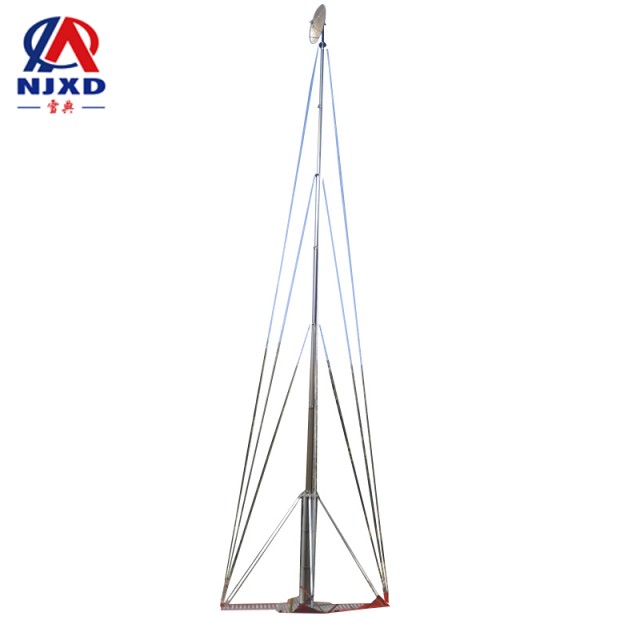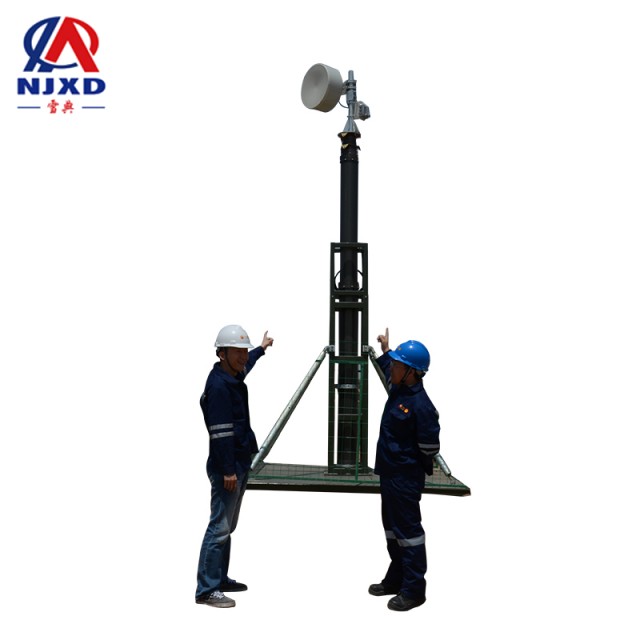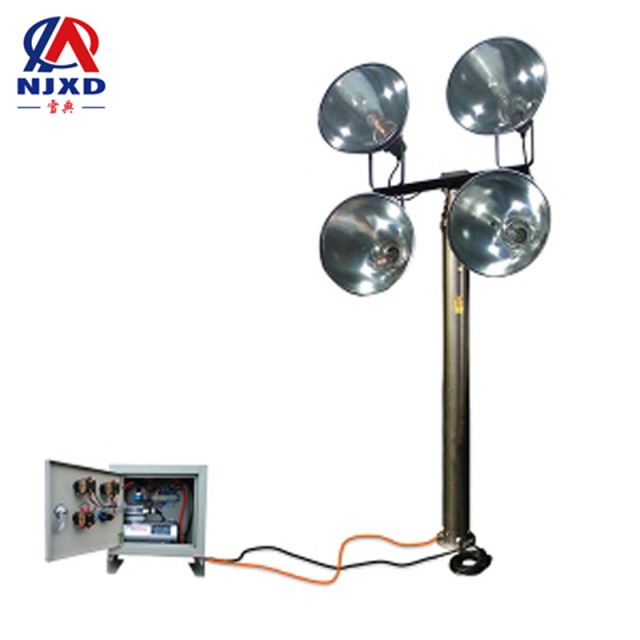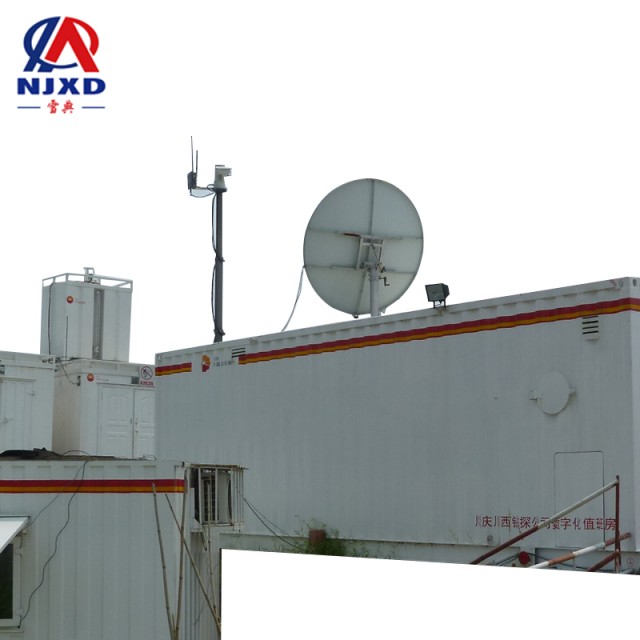NEWS
Lifting antenna microwave relay communication system
Time:2021-06-30 View:

Microwave relay communication system is also called "microwave relay communication system" and "ground microwave relay communication system". With a frequency of 1000? 30000MHz of electromagnetic waves rely on the ground sight distance relay station to switch over for long-distance communication system. The distance between two adjacent relay stations is usually 40? 60km. When the terrain is favorable, the distance between the two relay stations can plus-sized, but generally not more than 100? 150km. It has the advantages of large communication capacity, small external electromagnetic interference, stable radio wave propagation, etc. According to different baseband signal formation, it can be divided into analog microwave relay communication system and digital microwave relay communication system. The former adopts frequency division system to transmit multiple signals at the same time, and the RF modulation mostly adopts frequency modulation system; The latter adopts time division system to transmit multiple signals, and the RF modulation mostly adopts digital modulation system or orthogonal amplitude modulation system, compared with the former, it has the advantages of high transmission quality, economical terminal equipment, good security performance and so on, but it also has the disadvantages of wide occupied frequency band and low utilization rate of frequency band.
Composition
The microwave relay communication system consists of a series of microwave stations. Microwave stations can be divided into terminal stations, relay stations and sub-conversion stations. Terminal Station is the station at both ends of the line or the branch terminal when there is a branch line. The terminal station only sends and receives messages in one direction, and calls all up and down. Relay stations only complete signal amplification and switching. Relay mode can be divided into baseband transfer, intermediate frequency transfer and microwave transfer. General relay station can be unattended, and the terminal station will carry out telemetry and remote control on them. The branch station is a relay station that can get up and down the line and has the transfer function.
Features
The typical work frequency band of microwave relay communication system are 2GHz,4 GHz,6 GHz,7 GHz,8 GHz,11 GHz,15 GHz,20 GHz, etc. It has a communication capacity of band-width and a large communication capacity. It is not affected by the changes of sky power, industrial interference and sunspots. It has high communication reliability and good transmission quality, at the same time, compared with other wireless communication with longer wavelength and wired communication, it can easily overcome the inconvenience caused by terrain, has greater flexibility and lower cost, short construction period and easy maintenance, etc. Especially applicable to areas with unfavorable natural conditions or suffering from natural disasters, and when the network structure changes, it occupies an important position in the public network and the private network.

Classification
According to different baseband signals, microwave relay communication system can be divided into analog relay communication system and digital relay communication system. Analog system adopts frequency division multiplexing, modulation mode must be linear modulation, General RF modulation adopts frequency modulation system. However, with the development of digital network, analog system has been gradually replaced by digital system. Digital microwave relay system adopts time division multiplexing, RF modulation in small and medium capacity, often use phase shift key; In large capacity, often use multi-phase shift key and multi-phase orthogonal amplitude modulation technology.
Due to the strong anti-interference ability and no noise accumulation of digital microwave relay communication, digital microwave signals are convenient to store, process, encrypt and exchange, and are convenient to access the integrated service Digital Network, and the device is convenient for congealing, low power consumption and small size. Therefore, digital microwave relay communication has replaced analog microwave relay communication.
Synchronous Digital series (SDH) used in digital microwave relay communication is a new generation of transmission network system, which is the product of the continuous rapid growth of communication capacity. It has large transmission capacity, flexible networking, it has been widely used because of its outstanding advantages such as excellent long-distance transmission quality. In order to adapt the digital microwave relay communication in the future to the requirements of the new generation transmission network system, the SDH system of the digital microwave relay communication system is being transformed one by one to replace the original PDH (quasi-Synchronous Digital series) system.
The key to improve the capacity and performance of SDH microwave transmission is the research on technologies such as ultra-high level modulation, high performance time domain and frequency domain equalization, high cross polarization discrimination antenna and cross polarization canceller.

Development Trend
Mainly:
① development and digitization of high frequency segment. The digital microwave system in the 10~20GHz band has been put into use. The 40GHz band has also been used in the City TV relay transmission system. Modulation methods include pulse code modulation-frequency modulation (PCM-FM), pulse code modulation-phase shift keyed (PCM-PSK), pulse code modulation-orthogonal amplitude modulation (PCM-QAM), etc. In large-capacity digital microwave communication system, the fading caused by multi-channel transmission not only deteriorates the signal-to-noise ratio, but also produces amplitude distortion and phase distortion, leading to the deterioration of bit error rate. Therefore, in addition to adopting anti-fading measures such as spatial diversity and frequency diversity, adaptive equalization technology is also developed to reduce the influence of distortion.
② application of digital-analog compatibility technology. In the original analog microwave system, the upper and lower frequency bands of the base band of the voice channel are used to develop the data on The Voice and the data under the voice, or the analog channel is directly transformed into a digital channel.
③ device solid state and low power consumption. The emergence of high-power gallium arsenide field effect transistor and the application of microwave integrated circuit and micro-strip technology have realized the all-solid state and integration of receiver-transmitter, making the microwave relay communication system more reliable and adaptable, moreover, its total power consumption is only tens of Watts, which is conducive to the use of new energy sources (solar cells, wind power generation, fuel cells, etc.).
④ improve the effective utilization rate of microwave spectrum. The frequency modulation system has reached 3600 channels for each channel, while single sideband amplitude modulation can make each channel transmit 6,000 channels. Digital microwave communication also adopts modulation methods such as 8PSK and 16QAM, make the transmission rate of each channel reach 2 × 34MB/s and 140MB/s.
⑤ unattended operation of relay station and automatic management of system. The long service life of the device, the high reliability of the device and the appearance of microsecond wave channel switching switch create conditions for unattended relay stations. With the help of remote communication, alarm system and computer, it can not only monitor the operation of the whole system, but also realize automatic management. A terminal station (or hub station) can generally manage dozens or even hundreds of relay stations, thus improving work efficiency and reducing maintenance costs.
⑥ development of antenna and feeder. Lens antenna was used in the early stage, and Horn parabolic antenna was used in the mid-1950s. Since then, double-reflective cassegreen antenna and muitiband antenna (4, 6, 7GHz frequency band shared, or 4, 6, 11GHz band shared) and Andrew antenna system. Andrew antenna system adopts the method of adding edges on the reflection paraboloid and releasing microwave absorbing materials inside, which can suppress the side lobe radiation by about 20dB. The horn antenna developed in recent years is superior to the previous antennas in terms of broadband performance, back radiation defense and the standing wave ratio index of the antenna itself. It is an antenna with great development prospects. In the frequency band below 2GHz, coaxial feeder is mostly used; In the frequency band above 2GHz, waveguide feeder is mostly used. Rectangular waveguide feeder, stable wave type transmission, but large attenuation, suitable for short feeder system; Circular waveguide feeder, attenuation is small, but must be installed in a straight line; Elliptical Waveguide feeder, its attenuation is between the above two, which can be made into the whole flexible waveguide. It is easy to install and is a good feeder.

CATEGORY
NEWS
- Lifting antenna bracket microwave communication system
- Lifting antenna microwave relay communication system
- Digital microwave relay communication system for lifting communication equipment
- Antenna jacking system microwave station communication equipment
- Base station emergency communication radio navigation system